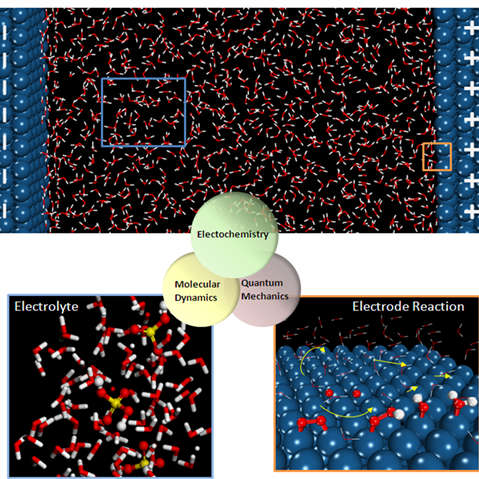Sneha Akhade
Co-advised by Mike Janik
In the design and functionality of devices such as proton exchange membrane fuel cells (PEMFCs), the interaction between the electrode and electrolyte plays a critical role. It is at the electrode surface that the desired reactions, such as the oxygen reduction reaction (ORR), take place. Transport of reactive species to the surface and the overall reactions kinetics are greatly affected by the interfacial structure. However, there has been little research conducted in understanding the structure of this interface, and how it reacts to different environmental conditions. In our group, we are combining classical molecular dynamics (MD) simulations using a reactive force-field (Charge Optimized Many Body COMB potentials) with quantum mechanical (QM) calculations to elucidate this structure. The goal is to design a new simulation technique capable of analyzing the important phenomena at electrochemical interfaces, such as chemical reactions, potential distribution and charge polarizability. With this understanding, reactions such as the ORR in PEMFCs can be analyzed more completely and experimental conditions can be suggested from a more fundamental standpoint. This research project has been supported by the National Science Foundation and is conducted in collaboration with the Mike Janik Research Groupand Susan Sinnott Research Group.



